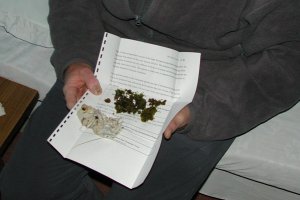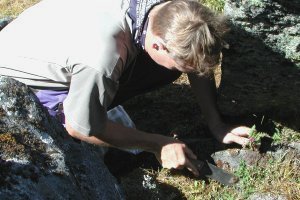
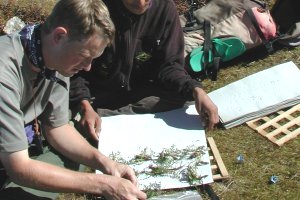
Herbarium Material


Sufficient plant material should be gathered for the number of duplicate specimens needed. We were collecting in sets of 4, but extra should be collected if a specimen is needed as a 'gift for determination' (specialists are usually prepared to identify material if they can keep the specimen). Care should be taken to gather good quality material complete with flowers, fruit, underground parts, etc. Large plants can be folded to fit them on a sheet, but for very large plants (e.g. trees and shrubs) representative material is taken, and notes made of the general habit of the plant. In most cases it is not advisable to just pull the plant up, as the underground parts often break off. Instead a stout trowel, ice axe, etc. should be used to dig up the plant (flower colour, etc.). At the same time as gathering the material notes should be taken recording the locality (including altitude and a GPS reading of latitude and longitude), habitat and habit of the plant. Robust plant material can be kept in plastic bags, but good specimens of delicate plants (e.g. plants which quickly loose their petals) can only be made by pressing them in the field. For this purpose a small field press is taken with day equipment, comprising several blotters and flimsies.
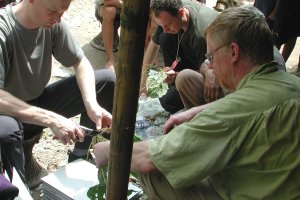

Collections are made throughout the day, but it is not until we reach camp that they are all sorted out, recorded in the Collecting Book, assigned a number and pressed. Before the process of recording can begin the collections in the field presses and collecting bags are sorted into chronological order of collecting localities (this makes it easier to write up the Collection Book). Working up the material then takes at least 2, preferably 3 people: one scribe for the Collecing Book, one 'presser' to number and prepare the specimens, and one person to prepare the material in advance of the presser.
Plant material is arranged in a 'flimsy' so as to display all the features (e.g. a leaf is usually turned over to show the reverse). A flimsy is a thin sheet of paper folded length ways. The folded size should be the same size as the press ends. We took pre-folded thin white ('bible') paper, but newspaper works well (tabloid papers make good flimsies...and can provided interesting reading material!). Tall plants can be folded, but excess leaves and other plant material should be removed if the specimen is too thick and will not dry efficiently. Secateurs should be used to clip the specimen to size, remove side branches, etc. Large specimens can be divided and pressed in two or more flimsies. Fleshy parts (e.g. fruits and succulent stems) can be sliced for easier drying. Bulky structures, such as cones, should be removed and dried separately (carpological collections). The specimens stay in the flimsies until they are finally mounted back in the herbarium.
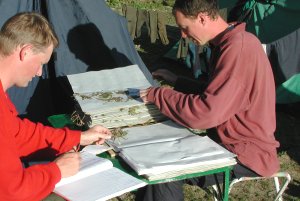
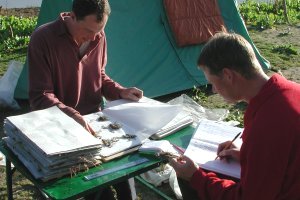
The details of all the plant material (herbarium and seed) is recorded in the expedition Collecting Book. We use a hard back A4 notebook, marked up with the following columns: Plant Name; Locality (including GPS reading); Habitat; Field Notes; Kind (herbarium, seed, DNA, etc.); Altitude; Date; and Collection Number. Each collection is given a unique, sequential collection number, and all material associated with it (seed, DNA, carpological, etc.) carries the same number. A field name is always recorded, even if this is very vague. This helps to sort out the inevitable boggles with the numbering.
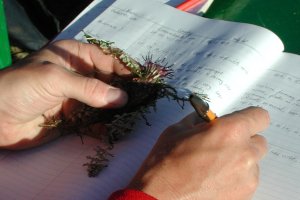
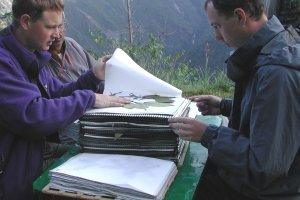
Field Notes are recorded from those noted at the time of collection, and supplemented by obervations at the time of final pressing. Field Notes should record features of the plant that will not be evident once it is pressed and dried, e.g. overall plant size, colour (especially flower colour), fleshy fruit size, fragrance. The collection number is written on the flimsy and the press built up by layering the flimsies, blotters (folded blotting paper) and sheets of corrugated aluminium. The final strucure should be:
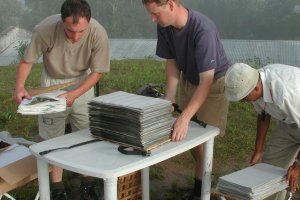
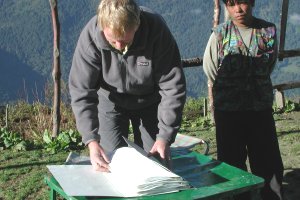
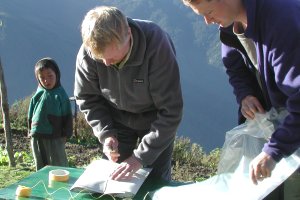

When all the specimens in a press have been checked the dry ones are removed and bundled. If we were breaking camp then we took all the corrugates out of the presses and packed them separately. This reduced the bulk and weight of the presses. The dry specimens were bundled in two dry blotters and tied firmly with string. The bundles were put in clean plastic bags and sealed with tape to keep the specimens dry. The dry specimens are quite vulnerable to damage and they were stored in a metal trunk for transportation.


Before leaving the country the herbarium specimens were arranged in numerical order and divided into the four sets. Two of the sets (one for KATH - the Natinonal Herbarium, and the other for TU - Tribhuvan University) were left behind, and the rest brought back to RBGE. Once back at RBGE the specimens were frozen at -18 degrees centigrade for 3 days to kill any insects that might damage the material.
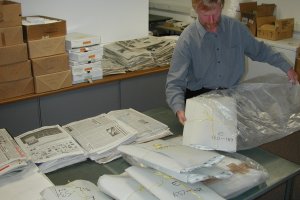
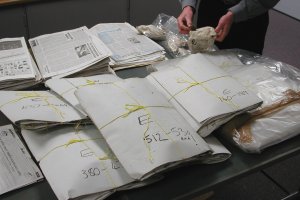
After freezing the specimens were unpacked and sorted into plant families in preparation for the long process of identification (identification was completed in May 2002). Information from the collecting book has been entered into the RBGE collections database, and used to generate herbarium labels.
